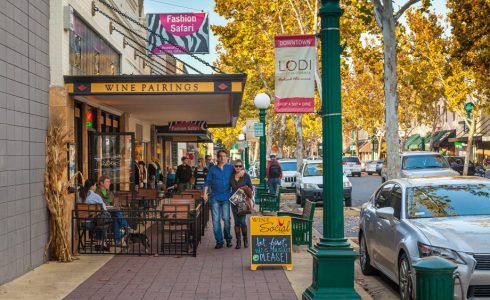
Buying a home is one of the biggest decisions you’ll ever make, and choosing the right neighborhood is just as important as finding the perfect house. After all, the neighborhood you choose will impact your daily life, from the schools your children attend to the safety of your surroundings. But how do you research potential neighborhoods before making such a big commitment?
We’ll explore some tips and strategies for effectively researching neighborhoods before making a purchase.
The initial research phase
Before you even begin to schedule viewings or fall in love with online listings, the initial phase of research is where you can gather invaluable data. The advent of the digital age has made this process more accessible than ever.
Utilizing online tools: One of the easiest ways to research a neighborhood is by turning to the internet. Websites like Zillow, Realtor.com, and Trulia offer valuable neighborhood information, including crime rates, amenities, and average home prices. You can also use Google Maps to explore the area virtually and get a sense of its layout and proximity to key locations like grocery stores, parks, and public transportation.
School quality is another critical aspect, even if you don’t have kids or are planning on starting a family. Good schools tend to reinforce property values, and tools like GreatSchools can offer ratings, reviews, and teacher statistics for schools in the neighborhood.
Social media and community forums: Online platforms like Facebook Groups or Nextdoor are goldmines for gathering uncensored, real-time feedback from current and past residents. Engage with the community and ask for things internet tools don’t tell you — the vibe of the neighborhood, how people interact, and even the less talked about but important aspects like the community’s reaction to adversity or new developments.
Remember, choosing a neighborhood is about more than numbers; it’s about future neighbors, the cultural makeup of the area, and everyday life. These conversations can bring the data to life.
The field visit
With your online groundwork done, it’s time for on-the-ground reconnaissance. A visit to the neighborhood is like a test drive — you get to experience how it feels to live there.
Visit the neighborhood: While online research can provide valuable insights, nothing beats visiting a neighborhood in person. To get a true sense of what it’s like to live in a neighborhood, visit at different times of the day and week. This will provide insight into traffic patterns, noise levels, safety concerns, and the overall vibe of the community.
Talk to residents: One of the best ways to learn about a neighborhood is by talking to current residents. They can provide firsthand insights into what it’s like to live there on a day-to-day basis. Ask them about their experiences with schools, local businesses, safety measures, community events, and any other aspects that are important to you.
Attend open houses and local events: Attend open houses for homes in the area to get a feel for the local architecture, style, and what’s available within your potential budget. You’ll also get a sense of what the neighbors could be like; observe what they’re doing on a Saturday and try to imagine if that fits with your lifestyle.
Local events are another great opportunity to mingle with future potential neighbors and gauge community involvement. Is there an active neighborhood association? Do residents host block parties or other gatherings? These aspects can strengthen the fabric of a community and enrich your life.
Check out amenities and proximity: Consider what amenities are important to you; whether it’s parks, restaurants, grocery stores, public transportation options, or cultural attractions – and see if the neighborhood offers what you’re looking for. Note the convenience of amenities and how well they stack up against your daily needs. Accessibility is key: how close are grocery stores, healthcare facilities, and recreational spaces? Consider the morning commute, access to public transport, and ease of travel to major roadways.
The ‘feel’ of the neighborhood is just as crucial. Does it feel safe, warm, and inviting? Or are you escaping the vibe you felt when you first drove through? Listen to your gut, it’s navigating you to where you belong.
Consult with your real estate agent
A knowledgeable real estate agent who specializes in the area can be an invaluable resource when researching neighborhoods. They can provide insider information about market trends, upcoming developments in the area, future growth potential, and other factors that could impact your decision-making process. Don’t hesitate to ask questions and seek their advice when researching potential neighborhoods.
Researching potential neighborhoods before buying can help you make an informed decision and ensure that you end up in a community that meets your needs and lifestyle. By combining online research with in-person visits and exploring local amenities and safety measures, you can make an informed decision about where to live. Remember that each neighborhood has its unique characteristics, so take your time exploring different options until you find the perfect fit for your needs and preferences.
New homes by FCB Homes
Once you’re ready to start looking for your new home, visit FCBHomes.com to learn more about our new home communities in Lodi and Riverbank.
